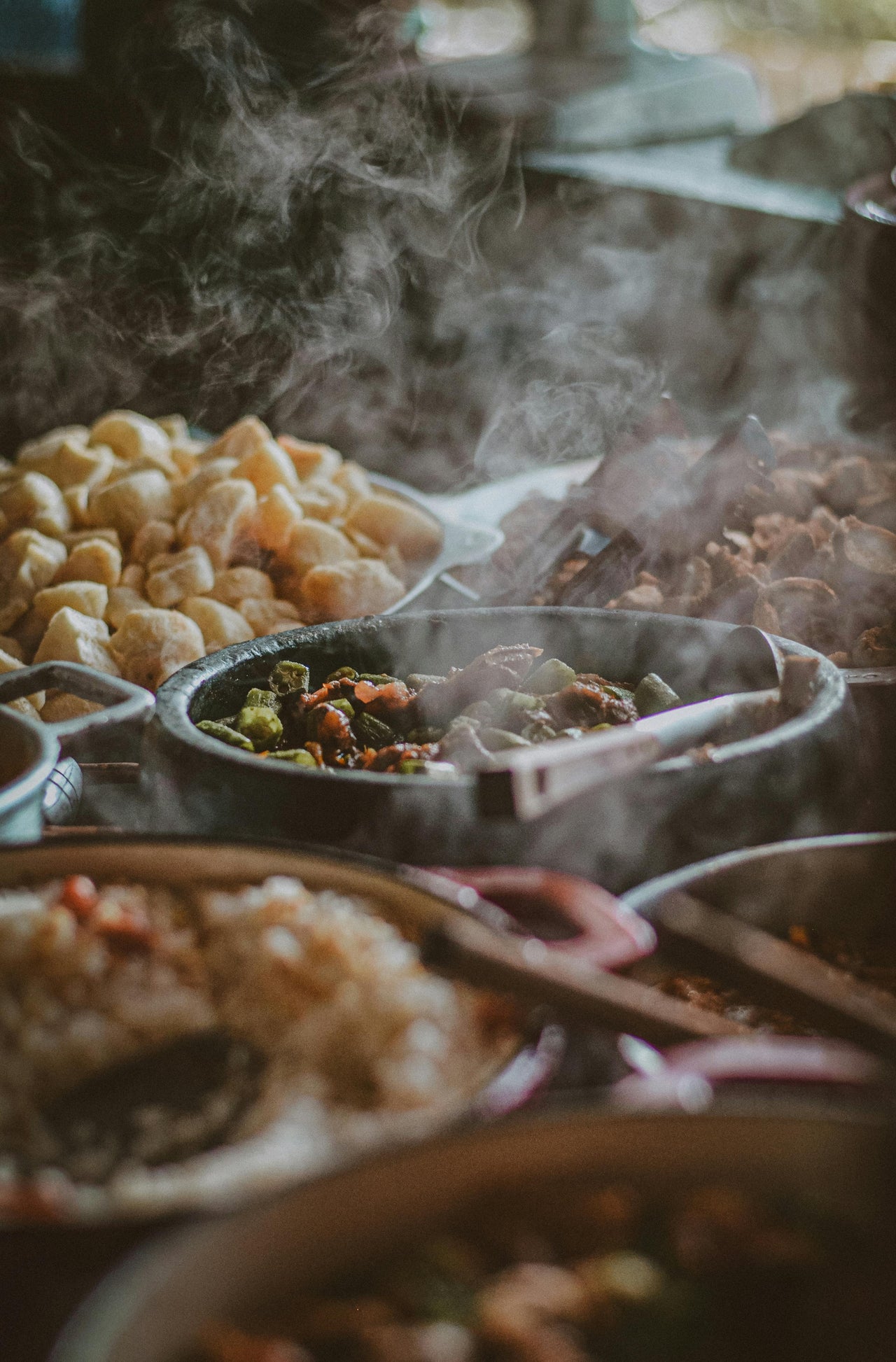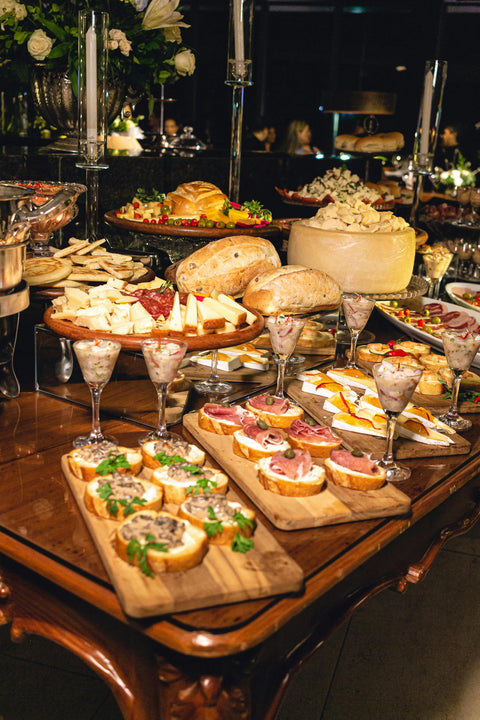Partager
French cuisine is famous for its elegance and refinement, but beyond the globally known dishes like coq au vin, ratatouille, and crème brûlée, there exists a rich collection of lesser-known traditional dishes that have fallen out of the spotlight over time. These forgotten or regional specialties are deeply rooted in French history and regional culture, and they offer a glimpse into the country’s diverse culinary heritage. In this post, we’ll explore some of these forgotten or overlooked French dishes and invite you to rediscover their flavors.
1. Le Bettelmann (Alsace)
A delicious dessert from the Alsace region, Bettelmann, also known as “poor man’s cake,” is a pudding made from leftover bread or brioche, cherries, almonds, and cinnamon. It was traditionally a way to use up stale bread while creating a comforting and indulgent treat. The cherries, often coming from local orchards, add a sweet and slightly tart note to balance the richness of the bread mixture.
• How to enjoy: Serve it warm with a scoop of vanilla ice cream or whipped cream for extra indulgence.
• Fun fact: Bettelmann means “beggar” in German, reflecting its humble origins as a dish of leftovers.
2. La Poule au Pot (Béarn)
Once a symbol of French prosperity thanks to King Henry IV, who famously wished for every family to have a poule au pot (chicken in a pot) every Sunday, this dish has since become somewhat rare. It is a simple yet flavorful preparation where a whole chicken is poached with vegetables like carrots, leeks, and turnips, creating a hearty and nourishing meal. The broth is served first, followed by the chicken and vegetables, often accompanied by a sauce made from the chicken’s giblets and mustard.
• How to enjoy: Ideal for a comforting family meal, especially during colder months.
• Fun fact: “Poule au pot” became a symbol of the king’s vision for a prosperous and happy France where even peasants could afford to enjoy such a meal regularly.
3. Le Civet de Lièvre (France profonde)
This traditional dish is a game lover’s delight, made from hare (or rabbit) stewed in a rich wine-based sauce, often thickened with blood to give it an intensely deep flavor. Civet de lièvre was once a popular dish in the French countryside, but as game meats became less common on tables, this dish also started to disappear from menus. The long, slow cooking process makes the hare tender, and the sauce is enhanced with garlic, onions, bacon, and mushrooms.
• How to enjoy: Best served with mashed potatoes or polenta, with a full-bodied red wine like a Burgundy to complement the gamey flavors.
• Fun fact: Civet derives from the Old French word “cive,” which means chives, an ingredient that was traditionally used in the dish.
4. Le Cardon Lyonnais (Lyon)
The cardoon, a cousin of the artichoke, has been grown in France since ancient times and is a staple of Lyon’s culinary heritage, though it’s rarely seen on menus today. The Gratin de Cardon is a popular way to enjoy it, where the cardoon stalks are baked in a creamy béchamel sauce, often topped with cheese for a golden crust. Its unique flavor, slightly bitter and reminiscent of artichokes, makes it a favorite for those in the know.
• How to enjoy: Served as a side dish during festive meals, particularly around Christmas in Lyon.
• Fun fact: Cardoon is one of the few vegetables protected by an AOC (Appellation d’Origine Contrôlée), ensuring its quality and geographical origin.
5. La Truffade (Auvergne)
From the heart of the Auvergne region, La Truffade is a hearty dish made from thinly sliced potatoes cooked in goose fat or duck fat, then mixed with melted Tome fraîche cheese. This simple yet satisfying dish was traditionally prepared by shepherds in the mountainous regions and has long been a comfort food in rural areas. However, it has become less common outside of its native region.
• How to enjoy: Perfect for a winter meal, paired with charcuterie and a green salad to cut through the richness.
• Fun fact: The name “Truffade” doesn’t come from the truffle mushroom, as one might assume, but from the Occitan word “trufa,” meaning potato.
6. Le Canard aux Cerises (Sud-Ouest)
This classic dish from the Southwest of France involves duck, which is seared and then slow-cooked with a cherry sauce. Once a favorite among French nobility, Canard aux cerises was an example of the sweet-and-savory combinations that were popular in medieval times. However, this dish has become less common in modern French cuisine, overshadowed by other duck preparations like Magret de canard.
• How to enjoy: Ideal for a special occasion, it’s typically paired with red wine and served with roasted vegetables or mashed potatoes.
• Fun fact: The sweetness of the cherries balances the rich, fatty flavor of the duck, creating a harmonious dish that was highly valued in royal courts.
7. Le Pounti (Auvergne)
Another rustic dish from the Auvergne region, Le Pounti is a savory loaf made with eggs, flour, Swiss chard, prunes, and pork or bacon. The addition of prunes gives it a unique sweet-savory flavor. This dish was traditionally made to use up leftover ingredients and was often served cold as a snack or starter. Although still popular in parts of central France, it is not widely known outside the region.
• How to enjoy: Serve warm or cold, as part of a picnic or as a starter with a green salad.
• Fun fact: Pounti’s blend of sweet and savory flavors makes it an interesting contrast to typical French dishes and offers a glimpse into the inventive spirit of rural French cuisine.
8. La Flognarde (Limousin)
Similar to a clafoutis, but made with apples, pears, or other fruits instead of cherries, La Flognarde is a baked custard-like dessert originating from the Limousin and Auvergne regions. It was a popular dessert in rural households where fresh fruits were abundant, but it has since been overshadowed by the more famous clafoutis.
• How to enjoy: Best served slightly warm, dusted with powdered sugar or accompanied by a dollop of cream.
• Fun fact: The name “flognarde” comes from the Occitan word “flanhard,” meaning soft or tender, describing the delicate texture of this dessert.
These overlooked and forgotten dishes represent a treasure trove of French culinary history. They may have fallen out of the limelight, but they continue to offer a rich tapestry of flavors and traditions for those willing to explore. By reviving these recipes, we not only celebrate France’s diverse gastronomic heritage but also bring new life to the tables of modern food lovers. So why not try cooking one of these forgotten gems and bring a piece of French history into your home?
1. Le Bettelmann (Alsace)
A delicious dessert from the Alsace region, Bettelmann, also known as “poor man’s cake,” is a pudding made from leftover bread or brioche, cherries, almonds, and cinnamon. It was traditionally a way to use up stale bread while creating a comforting and indulgent treat. The cherries, often coming from local orchards, add a sweet and slightly tart note to balance the richness of the bread mixture.
• How to enjoy: Serve it warm with a scoop of vanilla ice cream or whipped cream for extra indulgence.
• Fun fact: Bettelmann means “beggar” in German, reflecting its humble origins as a dish of leftovers.
2. La Poule au Pot (Béarn)
Once a symbol of French prosperity thanks to King Henry IV, who famously wished for every family to have a poule au pot (chicken in a pot) every Sunday, this dish has since become somewhat rare. It is a simple yet flavorful preparation where a whole chicken is poached with vegetables like carrots, leeks, and turnips, creating a hearty and nourishing meal. The broth is served first, followed by the chicken and vegetables, often accompanied by a sauce made from the chicken’s giblets and mustard.
• How to enjoy: Ideal for a comforting family meal, especially during colder months.
• Fun fact: “Poule au pot” became a symbol of the king’s vision for a prosperous and happy France where even peasants could afford to enjoy such a meal regularly.
3. Le Civet de Lièvre (France profonde)
This traditional dish is a game lover’s delight, made from hare (or rabbit) stewed in a rich wine-based sauce, often thickened with blood to give it an intensely deep flavor. Civet de lièvre was once a popular dish in the French countryside, but as game meats became less common on tables, this dish also started to disappear from menus. The long, slow cooking process makes the hare tender, and the sauce is enhanced with garlic, onions, bacon, and mushrooms.
• How to enjoy: Best served with mashed potatoes or polenta, with a full-bodied red wine like a Burgundy to complement the gamey flavors.
• Fun fact: Civet derives from the Old French word “cive,” which means chives, an ingredient that was traditionally used in the dish.
4. Le Cardon Lyonnais (Lyon)
The cardoon, a cousin of the artichoke, has been grown in France since ancient times and is a staple of Lyon’s culinary heritage, though it’s rarely seen on menus today. The Gratin de Cardon is a popular way to enjoy it, where the cardoon stalks are baked in a creamy béchamel sauce, often topped with cheese for a golden crust. Its unique flavor, slightly bitter and reminiscent of artichokes, makes it a favorite for those in the know.
• How to enjoy: Served as a side dish during festive meals, particularly around Christmas in Lyon.
• Fun fact: Cardoon is one of the few vegetables protected by an AOC (Appellation d’Origine Contrôlée), ensuring its quality and geographical origin.
5. La Truffade (Auvergne)
From the heart of the Auvergne region, La Truffade is a hearty dish made from thinly sliced potatoes cooked in goose fat or duck fat, then mixed with melted Tome fraîche cheese. This simple yet satisfying dish was traditionally prepared by shepherds in the mountainous regions and has long been a comfort food in rural areas. However, it has become less common outside of its native region.
• How to enjoy: Perfect for a winter meal, paired with charcuterie and a green salad to cut through the richness.
• Fun fact: The name “Truffade” doesn’t come from the truffle mushroom, as one might assume, but from the Occitan word “trufa,” meaning potato.
6. Le Canard aux Cerises (Sud-Ouest)
This classic dish from the Southwest of France involves duck, which is seared and then slow-cooked with a cherry sauce. Once a favorite among French nobility, Canard aux cerises was an example of the sweet-and-savory combinations that were popular in medieval times. However, this dish has become less common in modern French cuisine, overshadowed by other duck preparations like Magret de canard.
• How to enjoy: Ideal for a special occasion, it’s typically paired with red wine and served with roasted vegetables or mashed potatoes.
• Fun fact: The sweetness of the cherries balances the rich, fatty flavor of the duck, creating a harmonious dish that was highly valued in royal courts.
7. Le Pounti (Auvergne)
Another rustic dish from the Auvergne region, Le Pounti is a savory loaf made with eggs, flour, Swiss chard, prunes, and pork or bacon. The addition of prunes gives it a unique sweet-savory flavor. This dish was traditionally made to use up leftover ingredients and was often served cold as a snack or starter. Although still popular in parts of central France, it is not widely known outside the region.
• How to enjoy: Serve warm or cold, as part of a picnic or as a starter with a green salad.
• Fun fact: Pounti’s blend of sweet and savory flavors makes it an interesting contrast to typical French dishes and offers a glimpse into the inventive spirit of rural French cuisine.
8. La Flognarde (Limousin)
Similar to a clafoutis, but made with apples, pears, or other fruits instead of cherries, La Flognarde is a baked custard-like dessert originating from the Limousin and Auvergne regions. It was a popular dessert in rural households where fresh fruits were abundant, but it has since been overshadowed by the more famous clafoutis.
• How to enjoy: Best served slightly warm, dusted with powdered sugar or accompanied by a dollop of cream.
• Fun fact: The name “flognarde” comes from the Occitan word “flanhard,” meaning soft or tender, describing the delicate texture of this dessert.
These overlooked and forgotten dishes represent a treasure trove of French culinary history. They may have fallen out of the limelight, but they continue to offer a rich tapestry of flavors and traditions for those willing to explore. By reviving these recipes, we not only celebrate France’s diverse gastronomic heritage but also bring new life to the tables of modern food lovers. So why not try cooking one of these forgotten gems and bring a piece of French history into your home?



